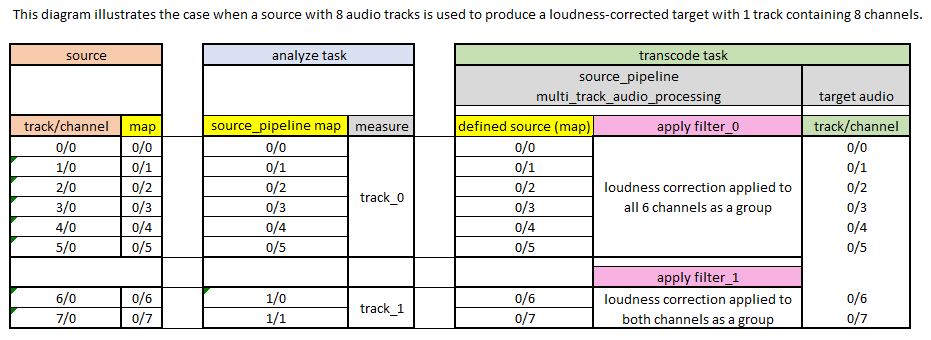Multi-Track Processing
When you want to apply loudness correction to audio content, there are some cases that will require the use of the multi_track_audio_processing feature to properly handle certain source audio or target audio configurations.
multi_track_audio_processing is for grouping channels together into a 5.1 or stereo layout for the sake of loudness measurement or correction when they may not be already grouped in the desired order.
Example #1: Interleaved to Discrete Processing
One example would be if your source has audio in 2 interleaved tracks, a 5.1 track and a 2.0 track, and your target output needs to have 8 discrete loudness-corrected audio tracks.
This diagram illustrates the signal flow through a Hybrik job for this configuration
- source
- analyze task - to measure audio loudness as a track
- transcode task
source_pipeline- applying loudness correction to audio channels using a normalize filter
Example job 1 is available at the bottom of this page.
Example #2: Discrete to Interleaved Processing
Another case for employing the multi_track_audio_processing feature is when you have a source with 8 discrete tracks (the 5.1 and 2.0 audio components), and you want your output to contain all 8 channels in one track:
- with loudness corrected, and
- in a single track
This involves some complex mapping in multiple locations within the job, as shown in the following diagram
Example job 2 is available at the bottom of this page.
Important Note
One important concept to understand is that any mapping that is applied to the analyze task source_pipeline does not carry through to the next task - which in both of the above cases is the transcode task. Mapping in the analyze task is only used to group audio channels for the measurement process.

